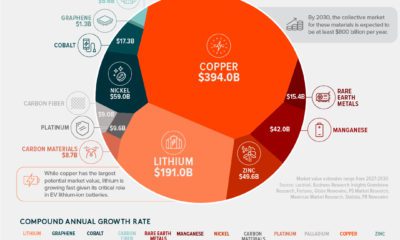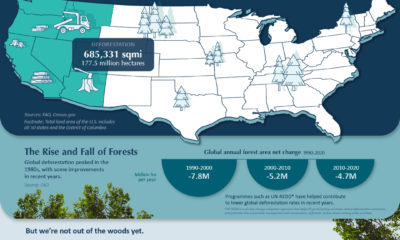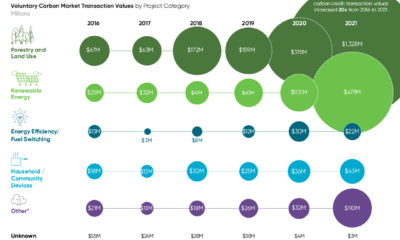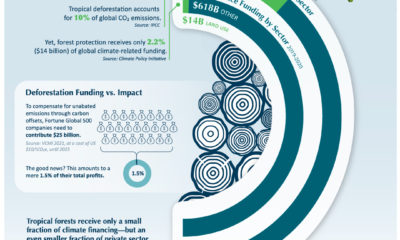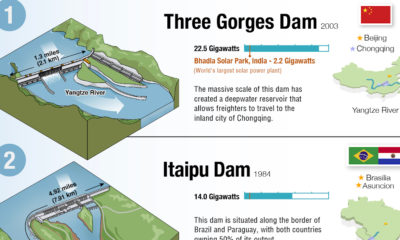We’ve already seen the mass devastation that wildfires can bring, especially in places like Australia, Serbia, and California. But new research by the UN indicates that things might get even worse by the end of the century. By 2100, the frequency of wildfires could increase by up to 50%. What’s causing this influx of wildfires around the world? Below, we dig into how climate change is impacting wildfires—and how in turn, wildfires are impacting climate change.
Climate Conditions That Support Wildfires
Before diving in, it’s worth going over the basics of wildfires, and how they get started in the first place. An area’s vulnerability to wildfires, also known as its fire regime, depends on three major conditions: its atmosphere, vegetation, and ignitions.
① Atmosphere
Atmosphere plays a big part in how sensitive an area is to wildfires. For instance, wind can increase oxygen supply in an area, which would help fuel a wildfire, and may even transfer embers to new locations.
② Vegetation
Vegetation is also a huge factor in whether or not an area is vulnerable to wildfires. A region with drier vegetation may catch fire more easily, and an area with more forest or shrubs provides more fuel for potential blazes.
③ Ignitions
An area that’s close to volcanic activity, or prone to lightning storms may be more susceptible to wildfires. However, human activity like campfires or faulty equipment can also trigger fires, so popular areas for camping or logging may be at higher risk as well. While these conditions vary depending on the location, in general, fire regimes are being impacted by climate change, which is causing an influx in the duration and intensity of wildfires around the world.
The Fire Climate Feedback Loop
Since the 1850s, global surface temperatures have risen by about 1.0°C (1.8°F). These increased surface temperatures have had far-reaching impacts on our climate—in the Northern Hemisphere, warmer temperatures have led to less snow, earlier arrival of spring, and ultimately longer, drier fire seasons. These longer fire seasons have led to an influx of wildfires. But here’s the kicker—wildfires emit tons of carbon. In 2021, wildfires around the world emitted an estimated 1.76 billion tonnes of carbon into the atmosphere, which for context, is more than double the annual emissions from the entire country of Germany. This carbon gets trapped in our atmosphere and contributes to rising surface temperatures. In other words, more carbon creates more wildfires—and more wildfires create more carbon.
Extreme Weather Events Are Rising In General
It’s not just wildfires that are growing in frequency and intensity because of climate change—droughts, heatwaves, and floods are also becoming more common around the world. This year, temperatures reached all-time highs across Europe, which wrecked havoc across the continent, impacted infrastructure, and even took lives. Experts warn that this may become the new normal. To help mitigate risk, governments, policymakers, and companies need to band together to create safeguards and establish proper preventative measures. on Over recent decades, farmers have been able to more than double their production of crops thanks to fertilizers and the vital nutrients they contain. When crops are harvested, the essential nutrients are taken away with them to the dining table, resulting in the depletion of these nutrients in the soil. To replenish these nutrients, fertilizers are needed, and the cycle continues. The above infographic by Brazil Potash shows the role that each macronutrient plays in growing healthy, high-yielding crops.
Food for Growth
Nitrogen, phosphorus, and potassium (NPK) are three primary macronutrients that are the building blocks of the global fertilizer industry. Each plays a key role in plant nutrition and promoting crop growth with higher yields. Let’s take a look at how each macronutrient affects plant growth. If crops lack NPK macronutrients, they become vulnerable to various stresses caused by weather conditions, pests, and diseases. Therefore, it is crucial to maintain a balance of all three macronutrients for the production of healthy, high-yielding crops.
The Importance of Fertilizers
Humans identified the importance of using fertilizers, such as manure, to nourish crops dating back to nearly 6,000 to 2,400 BC. As agriculture became more intensive and large-scale, farmers began to experiment with different types of fertilizers. Today advanced chemical fertilizers are used across the globe to enhance global crop production. There are a myriad of factors that affect soil type, and so the farmable land must have a healthy balance of all three macronutrients to support high-yielding, healthy crops. Consequently, arable land around the world varies in the amount and type of fertilizer it needs. Fertilizers play an integral role in strengthening food security, and a supply of locally available fertilizer is needed in supporting global food systems in an ever-growing world. Brazil is one of the largest exporters of agricultural goods in the world. However, the country is vulnerable as it relies on importing more than 95% of its potash to support crop growth. Brazil Potash is developing a new potash project in Brazil to ensure a stable domestic source of this nutrient-rich fertilizer critical for global food security. Click here to learn more about fertilizer and food production in Brazil.
